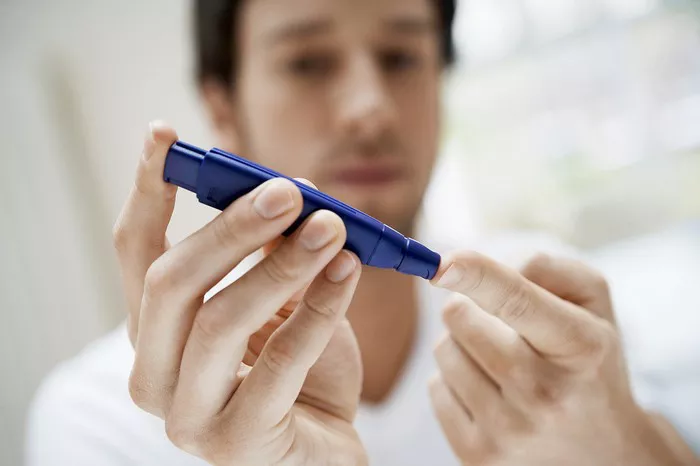For individuals diagnosed with pre-diabetes, managing blood glucose levels is crucial in preventing the progression to type 2 diabetes. Among the most important factors to consider is diet—specifically, the amount and type of carbohydrates consumed. Carbohydrates, which are a primary source of energy for the body, can significantly impact blood sugar levels. Understanding how much carbohydrate to eat and which types to choose is essential for anyone with pre-diabetes.
In this article, we will explore the role of carbohydrates in blood sugar management for pre-diabetics, the ideal amount of carbs to consume, and strategies to incorporate healthy carbs into your diet. We’ll also discuss the difference between simple and complex carbohydrates, how to count carbs, and tips for meal planning to maintain healthy blood sugar levels.
What Are Carbohydrates and How Do They Affect Blood Sugar?
Carbohydrates are one of the three macronutrients, along with proteins and fats, that provide energy to the body. They are found in a wide variety of foods, including fruits, vegetables, grains, legumes, and dairy products. When carbohydrates are consumed, the body breaks them down into glucose (sugar), which enters the bloodstream. Insulin, a hormone produced by the pancreas, helps regulate blood glucose levels by allowing glucose to enter the body’s cells, where it is used for energy.
For individuals with pre-diabetes, the body becomes less efficient at using insulin (a condition called insulin resistance), which results in higher-than-normal blood sugar levels. Over time, if blood glucose levels remain elevated, it can progress to type 2 diabetes. Therefore, managing carbohydrate intake is a key aspect of controlling blood sugar levels and preventing diabetes progression.
How Much Carbohydrate Should You Eat if You Have Prediabetes?
The amount of carbohydrates a person with pre-diabetes should eat depends on several factors, including their age, activity level, weight, and specific health goals. While there is no one-size-fits-all recommendation, understanding general guidelines can help you make better choices when planning your meals.
General Guidelines for Carbohydrate Intake
The American Diabetes Association (ADA) and other leading health organizations generally recommend the following guidelines for carbohydrate consumption:
Percentage of Daily Calories from Carbohydrates: For individuals with pre-diabetes, carbohydrates should comprise approximately 45-60% of total daily caloric intake. This range is considered appropriate for maintaining energy while preventing large spikes in blood sugar levels.
For example:
If your total daily calorie intake is 2,000 calories, you should aim for about 900 to 1,200 calories from carbohydrates.
This equates to roughly 225 to 300 grams of carbohydrates per day (since 1 gram of carbohydrate provides 4 calories).
However, it’s important to note that the quality of carbohydrates consumed is just as crucial as the quantity. Focusing on nutrient-dense, high-fiber, and low-glycemic index (GI) carbohydrates can help maintain stable blood sugar levels.
Carbohydrate Distribution Across Meals: Another key consideration is how carbohydrates are distributed throughout the day. Instead of consuming large amounts of carbs in one meal, which can cause blood sugar spikes, it is recommended to spread carb intake evenly across meals and snacks. This helps to regulate glucose absorption and keep blood sugar levels more stable.
For example, if you’re consuming 200 grams of carbohydrates a day, you might aim for:
- Breakfast: 40-50 grams
- Lunch: 50-60 grams
- Dinner: 50-60 grams
- Snacks: 10-20 grams (if applicable)
By balancing carbohydrate intake throughout the day, you can avoid significant fluctuations in blood sugar and reduce the risk of hyperglycemia (high blood sugar).
Carbohydrate Counting and Blood Sugar Control
Carb counting is a method commonly used by individuals with diabetes and pre-diabetes to manage their blood glucose levels. By tracking the amount of carbohydrates consumed in each meal, individuals can gain a better understanding of how different foods affect their blood sugar. This technique can be particularly useful for those who need to fine-tune their diet to maintain optimal blood sugar control.
To begin carb counting, start by looking at food labels and paying attention to the total carbohydrates in a serving. Some food labels may also break down the carbohydrates into sugars, fiber, and starches, which can be useful for choosing foods with a lower glycemic impact.
What Type of Carbohydrates Should Prediabetics Focus On?
Not all carbohydrates are created equal. Carbohydrates are classified into two categories: simple carbohydrates and complex carbohydrates. Understanding the difference between these two types of carbohydrates—and how they affect blood sugar—is key to managing pre-diabetes effectively.
Simple Carbohydrates:
Simple carbohydrates are found in foods like sugary drinks, candy, baked goods, and refined grains. These carbohydrates are rapidly digested and cause quick spikes in blood sugar levels. As such, they should be minimized in the diet of someone with pre-diabetes.
Common sources of simple carbohydrates include:
- Sodas and sweetened beverages
- Candy and pastries
- White bread and white rice
- Sugary snacks and desserts
While it’s important to limit simple carbs, it’s also important to be aware of foods that contain natural simple sugars, such as fruits. Although fruit contains simple sugars, it also provides fiber, vitamins, and minerals, making it a healthy choice for pre-diabetics when consumed in moderation.
Complex Carbohydrates:
Complex carbohydrates, on the other hand, are found in whole grains, legumes, vegetables, and some fruits. These carbs are broken down more slowly by the body, leading to gradual increases in blood sugar levels rather than sharp spikes. As a result, complex carbohydrates are more suitable for individuals with pre-diabetes.
Common sources of complex carbohydrates include:
- Whole grains (e.g., quinoa, brown rice, barley, oats)
- Legumes (e.g., beans, lentils, peas)
- Non-starchy vegetables (e.g., leafy greens, broccoli, bell peppers)
- Sweet potatoes and other root vegetables
Complex carbs also contain higher levels of fiber, which is beneficial for managing blood sugar levels and improving insulin sensitivity. Fiber slows the digestion and absorption of sugar, preventing rapid blood sugar spikes.
The Glycemic Index (GI) and Its Importance
In addition to considering the type of carbohydrate consumed, it’s helpful to understand the concept of the glycemic index (GI). The GI measures how quickly a food raises blood sugar levels after consumption. Foods with a high GI cause rapid spikes in blood glucose, while those with a low GI have a more gradual impact.
For pre-diabetics, focusing on low-GI foods can help maintain stable blood sugar levels. Low-GI foods include whole grains, most fruits, legumes, and non-starchy vegetables. High-GI foods, such as white bread, sugary cereals, and processed snacks, should be avoided.
Carb-Counting Strategies for Pre-Diabetics
Carb counting can be challenging for those new to managing their blood sugar levels. However, with the right strategies, it can be an effective way to maintain control over glucose levels. Here are some strategies to help you get started:
Read Nutrition Labels: Start by reviewing food labels for total carbohydrate content. Pay attention to serving sizes and aim for foods that are rich in fiber and low in added sugars.
Choose Whole Foods: Focus on eating whole, unprocessed foods like vegetables, whole grains, and legumes. These foods are rich in nutrients and fiber, which are essential for regulating blood sugar.
Watch Portion Sizes: Even healthy carbs can contribute to high blood sugar levels if consumed in large quantities. Use measuring cups or a food scale to ensure proper portion sizes.
Track Your Meals: Keeping a food journal can help you track the carbs you consume throughout the day. Apps like MyFitnessPal or Carb Manager can be useful for this purpose.
Consult a Dietitian: A registered dietitian or nutritionist who specializes in diabetes can provide personalized guidance on carb counting and meal planning to ensure that you’re eating the right amount and types of carbohydrates.
How Exercise Affects Carbohydrate Intake
Exercise plays a significant role in managing pre-diabetes and can help improve insulin sensitivity, which allows the body to use glucose more effectively. As a result, individuals with pre-diabetes may be able to tolerate more carbohydrates on days when they engage in physical activity. Exercise can also help with weight management, which is important for regulating blood sugar.
However, it’s important to remember that exercise alone is not enough to counteract a poor diet. A combination of regular exercise and a balanced, controlled carbohydrate intake is the most effective way to prevent the progression of pre-diabetes to type 2 diabetes.
Meal Planning for Prediabetics
Here are some tips for meal planning if you’re pre-diabetic and looking to manage your carbohydrate intake:
Include lean proteins in every meal, such as chicken, fish, eggs, and plant-based proteins like tofu. Protein helps to stabilize blood sugar levels and promote satiety.
Incorporate healthy fats like olive oil, avocados, and nuts. These fats also help regulate blood sugar and can make meals more satisfying.
Load up on vegetables, especially non-starchy varieties like leafy greens, cauliflower, and zucchini. These provide fiber and essential nutrients without raising blood sugar.
Plan meals in advance to avoid impulsive, unhealthy choices. Preparing meals ahead of time can help ensure that you have balanced, carb-conscious meals available when hunger strikes.
Conclusion
Managing carbohydrate intake is one of the most important steps pre-diabetics can take to prevent the progression to type 2 diabetes. By focusing on complex carbohydrates, choosing low-GI foods, and carefully monitoring carbohydrate portions, individuals with pre-diabetes can better control their blood sugar levels and improve their overall health. Through mindful meal planning, regular physical activity, and guidance from healthcare professionals, it is possible to manage pre-diabetes effectively and avoid the onset of diabetes.
Related topics:
What to Eat If Your Blood Sugar Drops


























